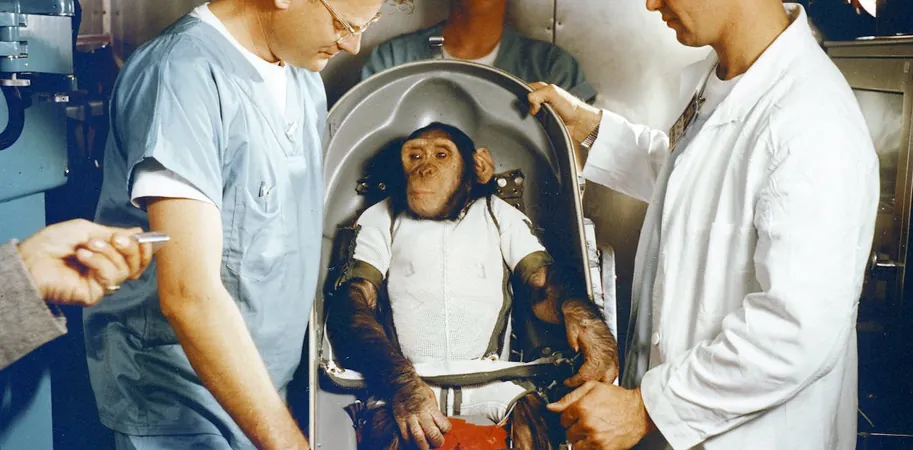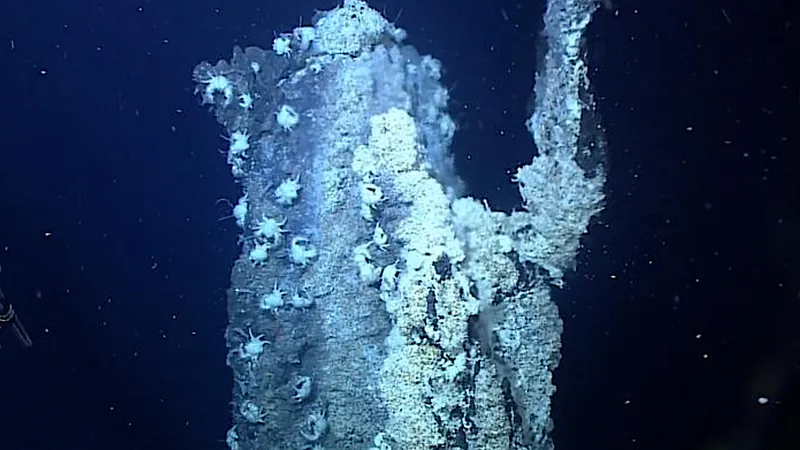
Space Animals: The Unseen Victims of Cosmic Exploration—Is It Time for New Rules?
2025-08-19
Author: Wei
A New Biosatellite Launch Sparks Ethical Debates
This week, Russia is gearing up to launch its Bion-M No.2 biosatellite from the Baikonur Cosmodrome in Kazakhstan, packed with 75 mice and a staggering 1,500 fruit flies. While this mission emphasizes Russia's commitment to space medicine, it also reignites urgent ethical discussions about the treatment of animals in space.
Animals in Space: A Long-Standing, Troubling History
Since the dawn of space exploration in the 1950s, animals have been at the forefront of groundbreaking missions. The Soviet Union famously sent Laika, a stray dog, into orbit aboard Sputnik 2 in 1957. Tragically, Laika faced harrowing conditions that led to her demise due to oxygen deprivation—a stark reminder of the early challenges of space travel.
The United States followed suit in 1961, sending Ham the chimpanzee on a suborbital flight. Ham's journey included invasive monitoring and electric shocks for wrong responses, resulting in not only physical challenges but psychological trauma post-mission.
Legal Protections for Space Animals: A Dire Need
As our exploration of the cosmos expands, the glaring absence of legal protections for these animals is an escalating concern. There are no comprehensive international regulations that officially recognize animal welfare in space missions, leaving their well-being in a state of uncertainty.
Past missions have shown that many animals are discarded like objects after their use. France's Féllicette, a cat who bravely traveled into orbit in 1963, was euthanized for scientific study post-mission, despite surviving re-entry. Unlike military animals that have transition programs for civilian life, space animals face neglect and lack formal exit protocols.
The Forgotten Casualties of Space Exploration
Despite advancements in technology, animal casualties have not disappeared. In 2019, Israel's Beresheet spacecraft crash-landed on the Moon, carrying thousands of tardigrades—tiny creatures with an uncertain fate. Such events raise fears about animal safety and the ethical responsibilities of space programs.
Growing Ethical Awareness and Reform Efforts
Activism, particularly by organizations like PETA, has caused ripples in the treatment of research animals. NASA, for instance, exited the BION program in 1996 and established the Principles for the Ethical Care and Use of Animals, which stress that animals deserve moral concern.
These principles advocate for respectful treatment and minimal pain, outlining ethical tenets around the societal benefits of animal research. While these guidelines do not prohibit animal use, they encourage rigorous ethical evaluation.
Legal Gaps: An Ongoing Challenge
Despite improvements, the legal framework surrounding animal welfare in outer space remains shockingly inadequate. Current treaties on the use of outer space focus primarily on human and state interests, failing to address the ethical implications of animal involvement.
Critics argue that emphasizing animal welfare may impede scientific progress. However, this notion is challenged by nations like New Zealand, where animals are recognized as sentient beings deserving of rights. The evolving legal landscape for animal protections on Earth makes the silence of space law concerning.
The Need for a New Ethical Framework
We stand at a crossroads: it’s imperative to craft a more balanced framework that recognizes animals as sentient beings and upholds their welfare alongside human interests. The types of harms faced by animals in space—stress, injury, and even death—mirror those inflicted on Earth for human utility. Addressing their welfare shouldn’t hinder our quest for knowledge; instead, it should enhance our ethical responsibilities as we reach for the stars.





 Brasil (PT)
Brasil (PT)
 Canada (EN)
Canada (EN)
 Chile (ES)
Chile (ES)
 Česko (CS)
Česko (CS)
 대한민국 (KO)
대한민국 (KO)
 España (ES)
España (ES)
 France (FR)
France (FR)
 Hong Kong (EN)
Hong Kong (EN)
 Italia (IT)
Italia (IT)
 日本 (JA)
日本 (JA)
 Magyarország (HU)
Magyarország (HU)
 Norge (NO)
Norge (NO)
 Polska (PL)
Polska (PL)
 Schweiz (DE)
Schweiz (DE)
 Singapore (EN)
Singapore (EN)
 Sverige (SV)
Sverige (SV)
 Suomi (FI)
Suomi (FI)
 Türkiye (TR)
Türkiye (TR)
 الإمارات العربية المتحدة (AR)
الإمارات العربية المتحدة (AR)